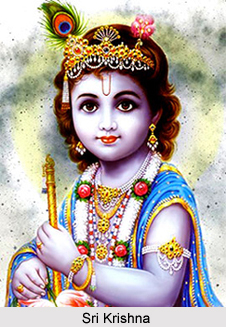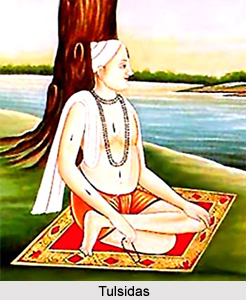 Vaishnava literature was composed in different parts of India that included Bengal, Karnataka, Assam and Tamil Nadu. The major Vaishnava poets include Mirabai, Chandidas, Kamalakanta, Kalidasa, Ramprasad Sen, Sri Chaitanya and Vidyapati.
Vaishnava literature was composed in different parts of India that included Bengal, Karnataka, Assam and Tamil Nadu. The major Vaishnava poets include Mirabai, Chandidas, Kamalakanta, Kalidasa, Ramprasad Sen, Sri Chaitanya and Vidyapati.
Vaishnava Literature in Karnataka
In the 15th century, under the Vijayanagara Empire, the Vaishnava literature developed as a new genre. Vaishnavism was a devotional movement of the nomadic Haridasa saints. Under the rule of King Krishnadeva Raya of the Tuluva Dynasty and his successors Vaishnava Literature had flourished considerably. Vaishnava authors wrote Hindu epics, Ramayana, Mahabharata and the Bhagavata by giving them a different treatment. Kumara Vyasa was an influential Vaishnava poet. Kumara Vyasa wrote Gadugina Bharata in the Vyasa tradition. It is a dedication to the deity of Gadag. It also emphasises the divinity and grace of the Lord Krishna. He portrays all characters with the exception of Krishna as deeply human with idiosyncrasies.
Puranic tradition had influenced Madhavacharya that is visible in the while glorifying Lord Rama. Chatu Vitthalanatha, a court poet of King Krishnadeva Raya first translated the Bhagavata into Kannada which covers all ten Avatars of Lord Vishnu.
Vaishnava Literature in Tamil Nadu
Vaishnava Alvars composed devotional hymns and songs. Poygai, Pudam and Pey were the three earliest Alvars from Tamil Nadu. Tirumalisai Alwar who lived in the eight century composed Naanmugantiruvadiandadi. Periyalvar and his adopted daughter Andal composed nearly 650 Vaishnava hymns. Nammalvar, who belonged to the ninth century, wrote Tiruvaimoli.
 Vaishnava Literature in Assam
Vaishnava Literature in Assam
Vaishnava Literature in Assam was propagated by Sankardeva, the founder of Assamese Vaishnavism. Here it was also based on the Indian epics which served as the storehouse of materials for literary works. The language of the Vaishnava poets expressed different shades of thought and feeling. Poets like Sridhar Kandali tried to enliven the dying Vaishnava literary traditions. Till the end of the Vaishnava era, the centre of literary activity was in western Assam. It was under the hegemony of kings either of Kamatapura, Cooch Behar or Kamarupa. Sankardeva (1449-1569) and Madhavdeva (1489-1596) were the two best-known saint-poets of Assam who belong to the later medieval period.
Vaishnava Literature in Bengal
Vaishnava Padavali is the result of the impact of Vaishnavism in Bengal. Vaishnava Literature in Bengal was composed in the Middle Ages. The story of radha and krishna was the main theme of this literature. Baru Chandidas` Shrikrishnakirtan is the first epic in Bengali language. Rabindranath Tagore composed his Bhanusingha Thakurer Padavali due to the influence of Vaishnavism. Maladhar basu composed Shrikrsnavijay. Chaitanya who was inspired by lyrics of Jayadeva, Vidyapati and Chandidas composed lyrics on Radha and Lord Krishna.
Vaishnava Padavali focused on the Radha-Krishna legend. Major poets of this tradition included Murari Gupta, Narahari Sarkar, Basudev Ghosh, Lochandas, Jnanadas, Govindadas, Balaram Das, Syed Sultan and Dwija Chandidas, Kaviranjan, Kavishekhar, Radhaballabh Das, Ghanashyam Das and Ramgopal Das, Vaisnavadas, Chandrashekhar, Radhamohan Thakur and many more.
Influence of Vaishnavism on Hindi Literature
The Saguna School was represented by Vaishnava poets like Surdas, Tulsidas and others. This school was Vaishnava in direction as its main compositions like Ramacharitamanas, Sur Saravali, Sur Sagar eulogize Lord Rama and Krishna.



















